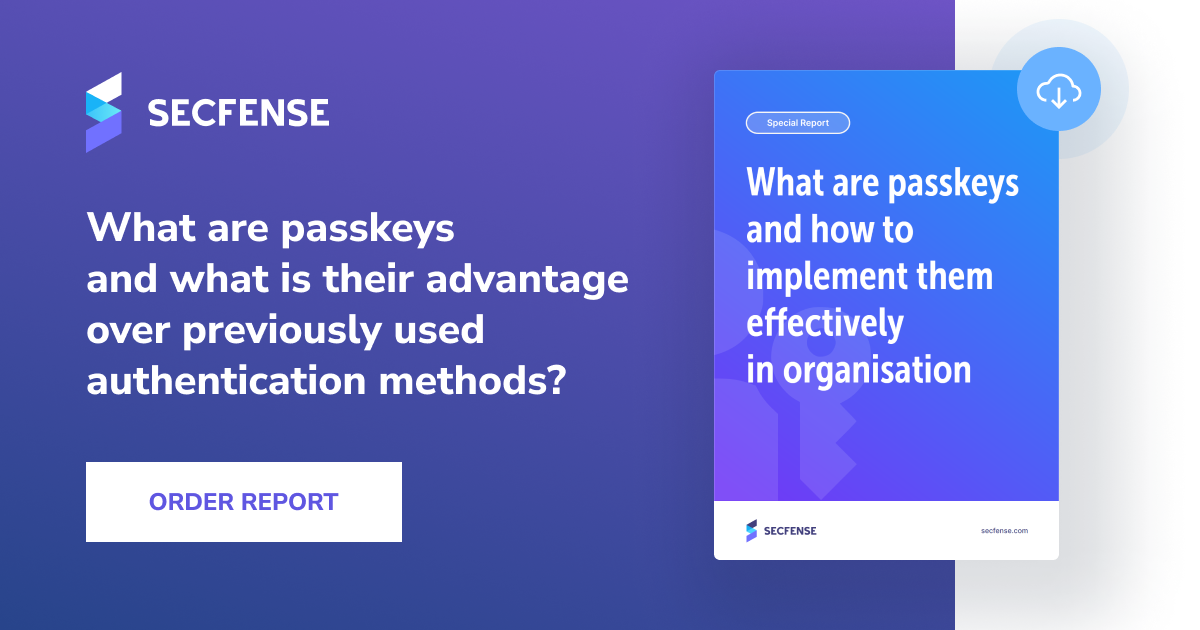In 2022, Apple, Google, and Microsoft introduced passkeys, a technology designed to replace traditional logins and passwords. These passkeys are now also used by LinkedIn, Playstation Networks, Uber, Bolt, and Kayak. The question is: Are passkeys the future for companies worldwide?

Slow Adoption Despite Potential
Many users of major technology services have seen prompts to switch to secure passkeys. However, few have made the transition. According to the FIDO Alliance, passkey technology could secure up to 7 billion accounts today, yet its actual user base remains small.
Understanding the Adoption Gap
Despite the clear advantages of passkeys, their adoption has been slow. This can be attributed to several factors:
- Lack of Awareness: Many users and organizations are not fully aware of the benefits and functionality of passkeys. Education and awareness campaigns are essential to bridge this gap.
- Technical Integration: For many companies, integrating new authentication technology can be a complex and resource-intensive process. This deters some organizations from making the switch.
- User Reluctance: Even when the technology is available, users may be reluctant to change their habits. This resistance to change can slow down the adoption rate.
Companies and Users Reluctant to Change
Few companies have integrated this technology, missing an opportunity to significantly boost security. According to a 2023 Verizon report, 49% of data breaches, including 86% of web application breaches, involved stolen credentials. Eliminating passwords could greatly enhance enterprise cybersecurity.
The Role of User Habits
User habits and convenience are major barriers. Passwords are familiar and have been in use for years. Despite frequent cyberattack reports, users continue to trust them. However, new technologies like passkeys, which utilize familiar methods such as fingerprint scanning, offer more security without sacrificing convenience.
- Trust in Familiarity: Users often trust what they know. Passwords, despite their flaws, are a known entity. Breaking this trust barrier requires demonstrating the reliability and ease of use of passkeys.
- Ease of Use: One of the significant advantages of passkeys is their convenience. By leveraging familiar methods like biometric authentication (fingerprint, facial recognition), passkeys can offer a seamless transition for users.

What Are Passkeys and How Do They Improve Security?
Passkeys are a secure method of authentication using the FIDO2 mechanism and public key cryptography. They create a unique pair of cryptographic keys—one private and one public. The private key is stored securely on the user’s device, while the public key is shared with the online service. This ensures that the private key never leaves the user’s device, providing a high level of security.
Technical Advantages of Passkeys
- Public Key Cryptography: The use of public key cryptography ensures that the private key remains on the user’s device, significantly reducing the risk of interception or theft during transmission.
- Credential ID: Passkeys use a Credential ID to streamline the authentication process. This ID is unique to each service and device, further enhancing security.
- Device-based Security: The private key is stored on the user’s device, leveraging the device’s built-in security measures (e.g., secure enclaves, trusted execution environments).
Implementation in Companies
In recent years, a significant number of companies have reported security breaches, many involving stolen access credentials. Regulatory bodies worldwide are responding by introducing regulations that mandate stronger authentication methods. Passkeys offer a solution, but integrating them requires time and effort from developers.
Overcoming Implementation Challenges
- Resource Allocation: Integrating passkeys into existing systems requires dedicated resources. Companies need to allocate time, budget, and skilled personnel to ensure a smooth transition.
- User Education: Employees and customers need to be educated about the benefits and usage of passkeys. This can be achieved through training sessions, informative guides, and proactive support.
- Third-Party Solutions: Utilizing solutions like User Access Security Brokers can simplify the integration process. These solutions allow companies to quickly add passkeys to all applications without extensive coding.

The Future of Passkeys
Predicting when passkeys will replace passwords entirely is difficult. Experts agree that they are the future, driven by increasing cyber threats and the need for secure authentication. Passkeys are already used by companies like Docusign, Kayak, Uber, LinkedIn, Shopify, and Yahoo! Japan. They are also expected to be implemented in Internet of Things (IoT) devices, which are currently poorly protected.
Long-term Outlook
- Increased Adoption: As awareness grows and more companies experience the benefits of passkeys, adoption rates are expected to increase. This will be driven by both regulatory requirements and the clear advantages in security and convenience.
- Expansion to IoT: The Internet of Things (IoT) represents a significant area of growth for passkeys. With many IoT devices lacking robust security measures, passkeys can provide a much-needed layer of protection.
- Phishing Resistance: One of the key advantages of passkeys is their resistance to phishing attacks. As phishing tactics become more sophisticated, the adoption of phishing-resistant technologies like passkeys will become increasingly important.

Conclusion
Passkeys offer a promising future for authentication, addressing longstanding vulnerabilities associated with passwords. More companies are recognizing the benefits, from enhanced security to operational efficiency. Organizations that adopt passkeys will be better equipped to protect their data and maintain trust among customers, employees, and investors.
The transition to passkeys represents a significant shift in authentication methods. As companies and users become more familiar with this technology, and as regulatory pressures increase, the adoption of passkeys is likely to accelerate. Embracing passkeys now can position organizations at the forefront of cybersecurity innovation, ensuring a safer and more secure digital environment for all.
